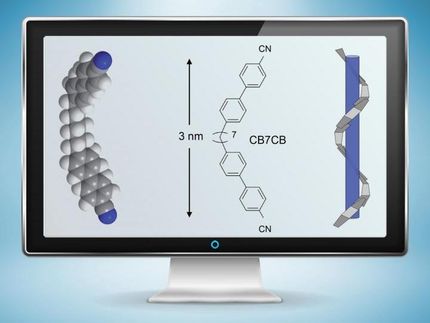Unique material could unlock new functionality in semiconductors
New ferroelectric material can be manipulated using light in previously impossible ways
If new and promising semiconductor materials are to make it into our phones, computers, and other increasingly capable electronics, researchers must obtain greater control over how those materials function.
In an article published in Science Advances, Rensselaer Polytechnic Institute researchers detailed how they designed and synthesized a unique material with controllable capabilities that make it very promising for future electronics.
The researchers synthesized the material -- an organic-inorganic hybrid crystal made up of carbon, iodine, and lead -- and then demonstrated that it was capable of two material properties previously unseen in a single material. It exhibited spontaneous electric polarization that can be reversed when exposed to an electric field, a property known as ferroelectricity. It simultaneously displayed a type of asymmetry known as chirality -- a property that makes two distinct objects, like right and left hands, mirror images of one another but not able to be superimposed.
According to Jian Shi, an associate professor of materials science and engineering at Rensselaer, this unique combination of ferroelectricity and chirality is advantageous. When combined with the material's conductivity, both of these characteristics can enable other electrical, magnetic, or optical properties.
"What we have done here is equip a ferroelectric material with extra functionality, allowing it to be manipulated in previously impossible ways," Shi said.
The experimental discovery of this material was inspired by theoretical predictions by Ravishankar Sundararaman, an assistant professor of materials science and engineering at Rensselaer. A ferroelectric material with chirality, Sundararaman said, can be manipulated to respond differently to left- and right-handed light so that it produces specific electric and magnetic properties. This type of light-matter interaction is particularly promising for future communication and computing technologies.
Original publication
Other news from the department science

Get the chemical industry in your inbox
By submitting this form you agree that LUMITOS AG will send you the newsletter(s) selected above by email. Your data will not be passed on to third parties. Your data will be stored and processed in accordance with our data protection regulations. LUMITOS may contact you by email for the purpose of advertising or market and opinion surveys. You can revoke your consent at any time without giving reasons to LUMITOS AG, Ernst-Augustin-Str. 2, 12489 Berlin, Germany or by e-mail at revoke@lumitos.com with effect for the future. In addition, each email contains a link to unsubscribe from the corresponding newsletter.






























































